

Table of contents
- Definition "annual"
- Annual herbs
- dill and chervil
- savory and coriander
- Annual herbs that are also cultivated perennial
- basil
- celery
- Biennial herbs
- fennel and cumin
- Parsely
- Leek
Sometimes spicy, sometimes sweet - and always tasty. Aromatic herbs have become indispensable in the kitchen. Chives, parsley and co. taste particularly delicious if they come from your own cultivation. But when it comes to the cultivation period, some hobby gardeners are unsure: Should the plant in question be cultivated for a year or two. And: Which varieties are really worthwhile?
Definition "annual"
The terms "annual", "biennial" and "perennial" are often used in connection with herbs and are taken for granted; it is difficult to make a clear distinction between the individual variants. True annual herbs are very rare; these are varieties that reproduce only once in the course of a continuous growing season and then die off. This includes, for example, the "Canary Nasturtium", which is rarely cultivated in our latitudes.
The herbs known as classic annuals, which are known in our latitudes, are usually only raised in this way - for example, because they originally come from warmer countries and do not overwinter here can.
A notice:
With many herbs that are grown annually, it is therefore worth trying to overwinter them indoors! They then become biennial or perennial herbs.
Annual herbs
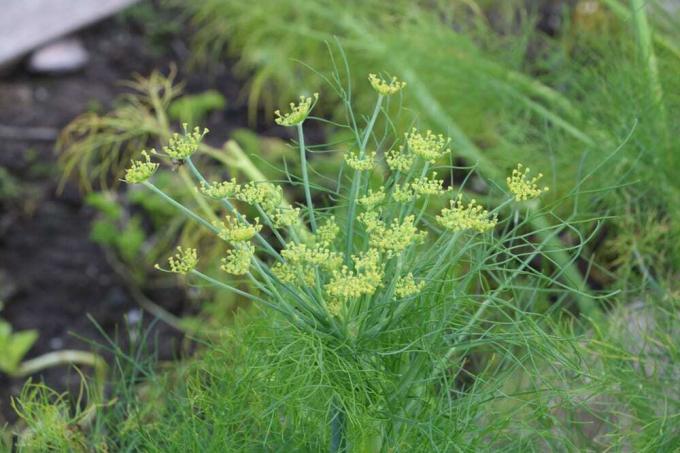
In our part of the world, many herbs are only cultivated for one summer. These include, for example, popular kitchen herbs that can be grown both outdoors and in the kitchen on the windowsill. For annual cultivation are available:
- Savory (leaves)
- Dill (fruit and leaf tips)
- chervil (leaves)
- coriander (fruit)
dill and chervil
– annual herbs for the penumbra –
The popular kitchen herbs dill and chervil are often planted together in a herb garden because they have similar cultivation conditions:
- Sow from April (beware of late frosts!)
- Can be cultivated in half shade
- Nutrient-rich and humic compost soil is used as the optimal substrate
- The soil should be protected from compaction
- The harvest takes place in summer
While dill, with its fresh, mildly spicy aroma, is mainly used for fish dishes the slightly sweet anise-like taste of chervil, especially in egg dishes or light sauces popular. If you want to expand your herb bed, you can locate the classic kitchen herbs parsley and chives in the same location - they also grow in semi-shade.
savory and coriander
– Annual sunbathers –
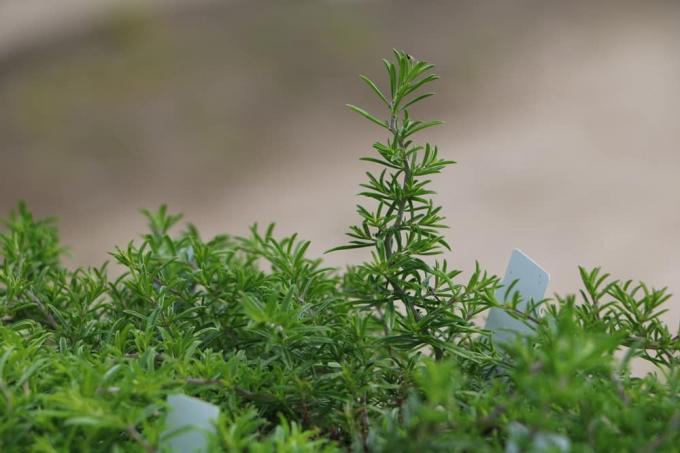
Savory and coriander can be planted in the same location as both have similar growing conditions:
- Sow from mid-April
- Cultivation in humus-rich and well-drained soil
- A sunny position is preferred
- The harvest takes place from early summer
While savory does well in poor soil, the corner of the bed in which coriander is sown should also be enriched with nutrients.
Coriander can be used in many ways; Potato dishes taste particularly good when they are refined with the spice; but Christmas cookies also get a special aroma with coriander. Savory, on the other hand, is often used to refine spicy stews as well as vegetable and meat dishes due to its sharp and slightly peppery taste.
Tip:
Savory can also be grown very well in the immediate vicinity of basil!
Annual herbs that are also cultivated perennial
In addition to the classic herbs, the growth period of which lasts only one year, there are also those with additional perennial varieties. These include basil and celery.
basil
– the classic par excellence –
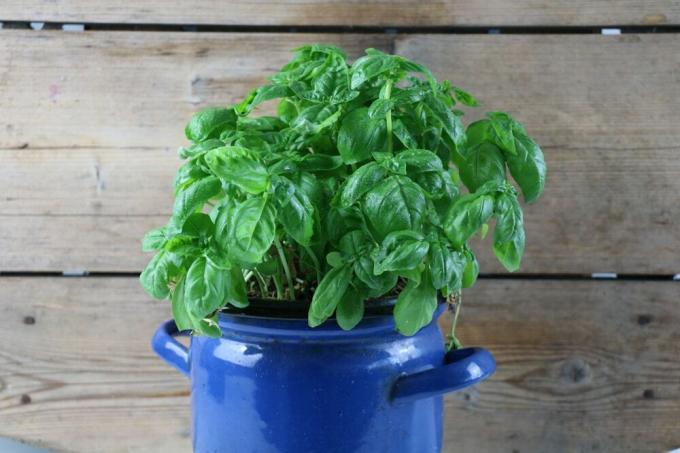
Basil is one of the classics of Italian cuisine and is mainly used in various pizza and pasta dishes. All basil species grow quickly - especially when ideal site conditions are offered:
- Sowing starts in April (optimal light conditions)
- The plant thrives on nutrient-rich substrate
- The location is chosen bright and warm
- Harvesting can begin in summer
A notice:
Annual basil is not hardy.
The following varieties are particularly popular:
- Genovese basil: the best-known type, aromatic and large-leaved
- Fino Verde basil: small leaves, ideal for making pesto
- Fine green basil: fine-leaved and suitable for desserts
- "Toscano" basil: large-leaved with a fine mint taste
- Neapolitan basil: large, light-colored leaves with a peppery aroma
- Cardinal basil: decorative red flowers
In addition, different varieties of bush basil are available, which usually have slightly smaller leaves deliver, for example Turkish bush basil (with a particularly sweet scent) or the real one Provence basil. However, basil is occasionally also available as a perennial plant. The following varieties can be overwintered:
- Wild basil: very robust, slightly smoky note
- African tree basil: spicy, clove-like
- Cyprus shrub basil: large plant with late flowering
celery
– also as a soup vegetable –

If you want to prepare a hearty vegetable soup, you need celery, a herb that is easy to grow, as an important basic ingredient. It is a salt-tolerant plant; cultivation works best if the following conditions are met:
- Sow in March
- Substrate should be nutritious
- Cultivation in a sunny position or in partial shade
- Regular watering is necessary
- Substrate should always be slightly damp
- Harvest possible from summer to autumn
Celery does not necessarily belong to the annual herbs, as different varieties can also be cultivated as biennials or perennials. The most popular varieties include:
- the "Krause cut celery": visually similar to parsley, annual and biennial
- the "Chinese celery": particularly fast-growing vegetable celery, annual and biennial
- the "Korean celery": particularly hearty with a slightly earthy note, persistent
Biennial herbs
The classic biennial herbs require an interruption in the growing season for successful cultivation; this can be triggered either by drought or by cold. Only when this condition is met will later flowering occur. The corresponding plants usually flower in the spring after sowing, while the seeds ripen in the summer months.
Biennial herbs include:
- fennel (fruit)
- cumin (seeds)
- parsley (leaves)
- leek (leaves)
fennel and cumin
– classic medicinal herbs –

Fennel mainly grows perennial, but as a useful herb it is grown as an annual and biennial for seed production. However, in our latitudes, cultivation is usually annual – especially with certain early varieties. These include the annual fennel 'Magnafena', which is designed to provide an edible portion very early in the year; sprouts taste good in spring, cabbage and seeds throughout the year. If you want to benefit from the production of seeds in the fennel, you often grow the fennel every two years.
If you want to have some of the delicious and healthy herb for at least two years, you can choose between different varieties:
- Spiced fennel classic as a tea for stomach pains
- Spice fennel "Berfena": compact cultivation with high oil content and intense aroma
- Bronze fennel: small form with ornamental, red-brown foliage
When growing fennel, the following aspects must be considered:
- Sow only from June, as fennel tends to bolt
- Use of humus-rich and well-drained garden soil that is lightly fertilized
- A warm and sunny place is chosen as the location
- In case of dryness it should be watered
- Lettuce plants have proven to be ideal partners in mixed cultures
- Harvest takes place in autumn
Caraway is also one of the classic medicinal herbs and is also used to flavor spicy dishes; The spice is particularly tasty in oriental dishes. Cumin is offered in both annual and biennial varieties:
- The biennial variant is best sown in late summer
- Caraway is cultivated in deep and lean substrate
- Care must be taken to ensure that the soil is always moist
- Caraway thrives in a sunny position and moderately in partial shade
- The seeds are harvested when they reach full size.
A notice:
Transplanting is generally not well tolerated!
Parsely
– Classic kitchen herb –

Parsley is usually sold as an annual herb; in fact, it is a plant that is intended for overwintering and, depending on the variety, grows biennially or even perennially. Cultivation, however, requires some finesse; the following aspects must be taken into account:
- Sowing is best done in August with pre-fertilized soil
- Cultivation then takes place in a cool, shady location.
- A harvest is then possible in the spring of the following year
Tip:
If you leave the parsley roots in their place in autumn, you can harvest again in the following season from late spring.
The following varieties provide different taste impressions:
- Parsley "Mooskrause": biennial, strong curly
- Italian parsley: perennial, smooth-leaved
- Japanese parsley: perennial, tastes of celery and angelica
Leek
– indispensable in salad dressing –

One of the classic biennial kitchen herbs is the garden leek, which can reach a height of up to 80 cm. In contrast to the wild form, it does not form an onion. The plant thrives best when the following cultivation conditions (summer leeks) are offered:
- Sowing takes place in spring
- The soil should be rich in nutrients
- A brighter and sunnier place is ideal as a location
- A constant water supply is important for a bountiful harvest
- The harvest takes place in summer
The most popular varieties of leeks (summer leeks) include:
- Bavaria: early leek, fast growing, very hot
- Megaton: long-stemmed, very productive
- Elephant: particularly thick trunks, does not tolerate frost
- Early giant: fast-growing, high yields, particularly juicy
In addition to the classic two-year-old garden leek varieties, there are an increasing number of exotic varieties on the market that can also be cultivated for longer than two years. These include, for example:
- Chives "Profusion": ornamental and edible flowers
- Leek slices: tasty and robust wild herb that can even be harvested in winter
- Onion leek: fine onion aroma with a hint of garlic
No matter which variant the hobby gardener chooses: With the right seasoning, every dish becomes a culinary delight
 garden editorial
garden editorial I write about everything that interests me in my garden.
Learn more about annual plants

Datura in the garden: 6 information on reporting requirements and toxicity
Beautiful but very dangerous. We are talking about datura (datura), an annual and above all poisonous perennial with high potential for reproduction. The strikingly prickly, globular and walnut-sized fruits are eponymous. The flowers are very similar to those of the trumpet tree, which is also poisonous.

Annual plants: 10 beautiful perennials for the garden
Annual plants germinate, flower, and set seed, all within one growing season. Then they die off again, so that they are usually not frost hardy. However, the hardy seeds survive the cold season, so that annual plants sow themselves and come back the next year.

Annual summer flowers: comprehensive list sorted by colour
Annual summer flowers beautify every garden with their colorful blossoms. The development of these plants is limited to the growing season, they germinate and die in a year or during a season. Many of the annual summer flowers come from the tropics, so their seeds are very sensitive to cold.
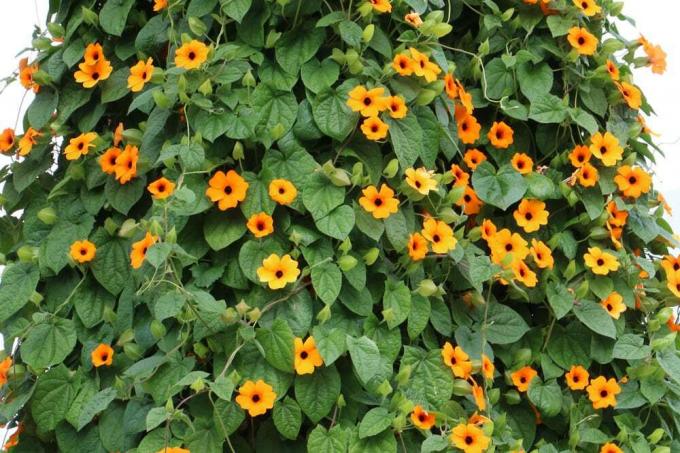
Annual climbing plants: 15 fast-growing and flowering plants
Annual climbing plants offer the same thing: quick and lush greenery for impatient gardeners, natural privacy screen for cozy spots or just decorative leaves and many colorful ones Blossoms. They are easy to cultivate and, with their variety of varieties, provide new variety every year.
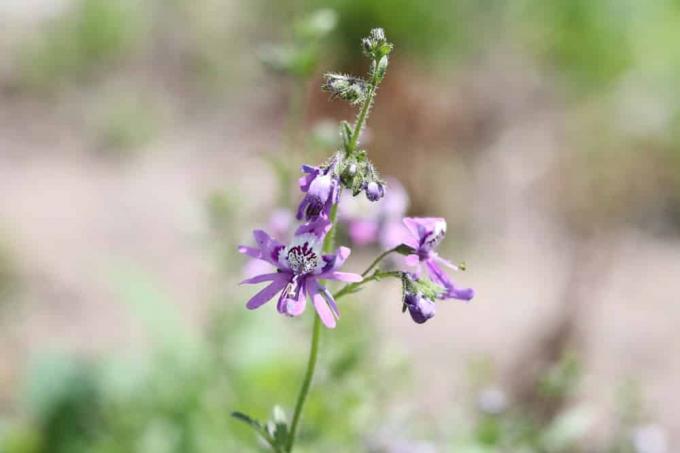
Caring for and overwintering farmer's orchid - schizanthus / split flower
Peasant orchid, split flower or schizanthus - as the orchid of the little man is also called, the nightshade plant enchants with its abundance of flowers and variety of colors. However, it can only do this if it is properly cared for and overwintered. Here we tell those who are interested what is important.
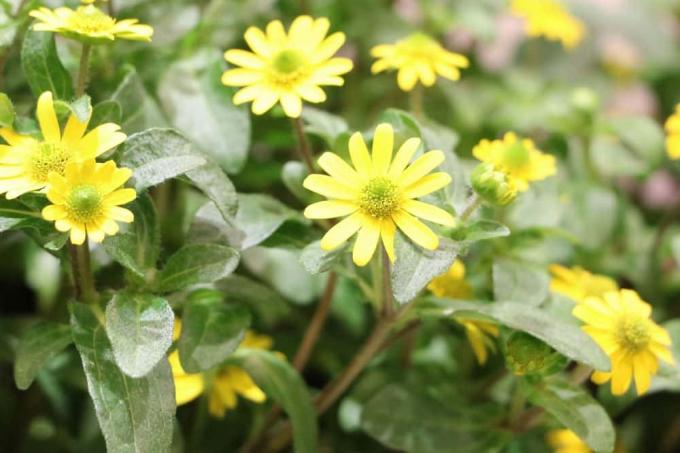
Hussar's Head, Sanvitalia – Care of Hussar's Head
The likeable hussar's head Sanvitalis procumbens blooms very persistently throughout the summer until the first frost. The garden, balcony and container plant is very easy to care for and constantly forms new buds. The blooms include all shades of yellow to orange flowers.



